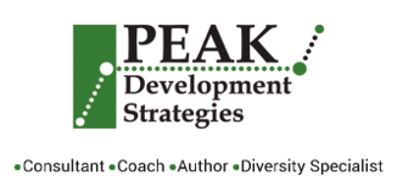BUSINESS DEVELOPMENT USING TEAMS
Who needs business development teams? 
Companies that:
- Offer complex products and services
- Provide multiple product lines to a single customer
- Present to multiple buyers in a company
- Close deals that require rapid product implementation
If this is you, then it may be worth it to your company to develop a highly qualified strategic business development team.
One example of this process is my banking client. The owner of the bank (one with his name on the sign) uses this process successfully to gain new core customers in an environment saturated with competition. He moves himself into a subordinate role in the business development process. He knows there are people on his team that are more qualified to develop business than he is. He has learned that business development is not about who he is, but the value of the role he plays at the core of the team. In a highly competitive market, his name doesn’t mean that much and he knows it. He understands how his customers buy his products and services and he develops teams of experts to help his customers buy.
How do your customers buy you?
The next step in the process is to understand how your customers buy what they need. Let’s use the Dunkin’ Donuts and Starbuck’s examples in conveying the Steps of the Buy.
What is the common denominator between DD and Starbuck’s…their customers want a cup of coffee. From this point on the Steps of the Buy are dramatically different for each business, yet they both are wildly successful at selling coffee. Why is that?
DD and Starbuck’s have invested time, money, and resources to understand how their customers find their products and stores and how they make their selection. They also understand what their customer wants to experience in their store and what the customer perceives as value. Neither one is trying to be the other; they are matching their sales process to their customers buying needs and habits.
Once you understand how your customers buy from you, build a team of “experts” that can exploit your unique value proposition.
What are the advantages of using this process?
- Achieve higher customer satisfaction and retention rates
- More effective use of time by team members
- Higher penetration rates into accounts
- Better positioning with customers from very first contact
- More questions can be answered on the spot by the “experts” on the team call
- Reduce error rates in delivery of products and services
How does it work?
The first step is to decide who belongs on the team. The owner of the company is not necessarily the best person to facilitate the process. Use the person with the best business development talents to lead the way.
- Matching the team to the customer:
- Knowledge of product, customer, and team
- Relationships with customer and team
- Geography – close to action (especially important in rapid product launch)
- Availability – free from other commitments
- Credibility – recognized expert
- Motivation – a desire to help
- Match Up – have the right players on the team (includes matching personalities)
- Conduct a pre-call planning meeting appointing one individual as the business development leader who facilitates this meeting (should be the person with the strongest relationship with the customer)
- Preferably face-to-face
- List of problems/issues/needs of customer
- Define communications and accountability expectations during business development cycle
- Define the roles of the “experts”
- Each member present must be there for a specific purpose
- Address issues of status and rank and how they may affect the deal
- Assign roles for:
- Those who take notes and observe when “discovery” is being done by other team member(s)
- Team members who have a talent for observing body language/interactions
- Listen for underlying meanings – what they say/don’t say
- Upfront agreement reached among the team members, team members must be compatible
You’re on Stage – the audience is your customer
If there is any negativity between team members displayed either verbally or nonverbally, customers will pick up on these signals and potentially this could impact sale and/or customer retention. Conversely, if positivity and a strong and healthy team dynamic are displayed, this will give you the slight edge.
- At the first call:
- Business development team member who has the strongest relationship with the customer opens the meeting
- “Relationship” and “trust” exist between people—not in the titles/positions of the team members
- Introduce team and explain purpose of their presence along with expertise/title
- Ask the customer what they would like to accomplish today
- Let the customer establish the priority of issues/problems/needs to be discussed
- Each team member who had been previously assigned to address the issues/problems/needs is introduced by the lead member
- Be succinct and to the point in your answers
- Lead member closes the meeting and reviews next steps
- Immediately after first call, allow fifteen minutes to discuss team call – intellectually! The emotional post-mortem is done on a personal level alone with each team member
- Did we follow the plan?
- Did we stay in our roles?
- What did we do well that we want to repeat in future?
- What did we not do well and do not want to repeat?
- What did we learn about the customer and their needs?
- What promises were made?
- What are the next steps?
- Next steps and homework agreed upon within team to move the customer along in the deal
What are the reasons this process fails?
- Lack of understanding of how people buy your services and matching your sales process to their Steps of the Buy
- Complacency and lack of planning for each opportunity
- Conflict/Egos/Titles vs. Roles that are not properly dealt with during the business development process
- Lack of professional development and training of team members
- Low trust levels between team members, with management, leadership, and/or ownership
- Accountability issues to homework, research, and next steps to move the process forward
- Lack of understanding of how to use their combined talents together as a team
- Commission/compensation issues
- Goals not clearly defined
- Members “dropping the ball” without consequences
- “Failure to Communicate” as in “Cool Hand Luke”
- Micromanagement by any one single individual in the organization or team
There are many business development professionals who have been in their roles for a long time and have sold alone. These are hard habits to break as well as a foreign concept to consider. If used properly and consistently, you can increase the odds of a successful outcome to your business development efforts as well as create a long term customer relationship.

Recent Comments